Engadget has been testing and reviewing consumer tech since 2004. Our stories may include affiliate links; if you buy something through a link, we may earn a commission. Read more about how we evaluate products.
Ten years in, a look at the iPad killers that weren't
None were runaway hits, but that doesn’t mean they didn’t belong in the race.
Apple's original iPad went on sale 10 years ago today, which means that it's been 10 years since people finally started taking tablets seriously. Hyperbole? Not really.
The idea of a tablet computer had been kicked around for years, fueled in large part by science fiction (Star Trek's PADD immediately springs to mind) and ever-shrinking components. A handful of companies gambled on the concept, too, and Microsoft's late-’90s attempt was easily the most ambitious of the bunch. It languished, as did all the others, for similar reasons. They were unwieldy. They were expensive. Their software wasn't well-suited to, you know, tablet things. And then came the iPad, which solved just about all of those problems.
These days, the tablet landscape isn't nearly as weird or as varied as it used to be. Samsung still makes great ones. Amazon mostly makes them for kids, and Huawei keeps churning out models we'll never see here in the US. For many people, though, the iPad is the tablet to own, be it because of better software, or a lack of competition or just some highly effective marketing.
Still, I think Apple owes a certain debt to those other, fallen tablets. By trying new things and helping to inform people's expectations, they forced Apple to do better with every new iPad. That's why, a decade after Apple's first tablet went on sale, we wanted to shine a light on the devices that tried to dethrone it. Not because they failed, but because they were fascinating and forward-looking, and because they helped shape the arena in which Apple ultimately succeeded.
Rivalries heating up
By the time the iPad went on sale in 2010, Apple and Samsung had been locked in an all-out smartphone war for years. It was inevitable that rich, ambitious Samsung would build a tablet of its own. That device, the Galaxy Tab, wasn't just a first for the company; it was the first serious Android tablet, period. (That is, unless you want to count early phone-tablet hybrids like the Dell Streak.)
For better or worse, the original Tab wasn't much more than an oversized Galaxy S. I mean that quite literally: The original model used the same Exynos 3110 chipset as Samsung's then-flagship phone, along with the same 512MB of RAM. Still, it was enough to run Angry Birds and the rest of Android's growing collection of apps. It even offered enough power to play Flash content in-browser, which -- while arguably helpful at the time -- ultimately became a moot point because of Steve Jobs's decision to disregard Flash across all of Apple's mobile devices.
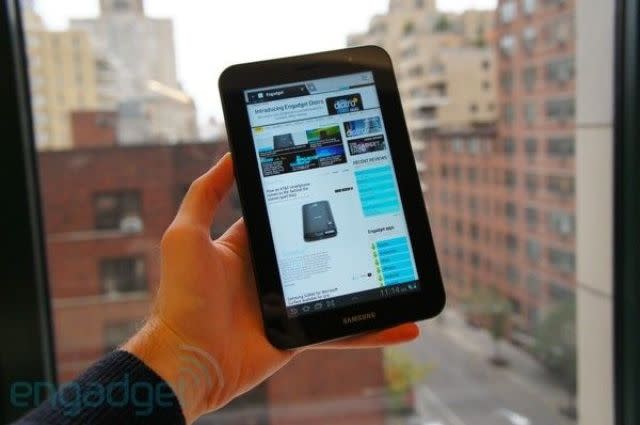
What really helped the Galaxy Tab stand out compared to the iPad was its design. Rather than embrace a bigger screen, Samsung stuck to a 7-inch LCD panel that made the Galaxy Tab feel more like a paperback to the iPad's heavy clipboard. And unlike the original iPad which had no cameras, the Galaxy Tab had two: one for selfies and low-quality video calls, plus a 3-megapixel sensor for proper photos and video. Of all the companies that pushed out tablets in the iPad's wake, Samsung was one of the few with the resources to commit to the long game. As a result, the Galaxy Tab quickly begat a line of sequels and spin-offs, which included notable devices like the Galaxy Tab 7.7 (the first tablet to use a Super AMOLED screen) and the Galaxy Note 10.1 (which beat Apple to great tablet styluses by years).
Other companies building would-be iPad rivals weren't nearly as fortunate. For months after the Galaxy Tab’s launch, Android tablets from all comers nearly flooded the market, but Motorola’s Xoom seemed like the likeliest contender. Remember: Thanks to its hugely successful Droid smartphones, Motorola was perhaps the Android device maker to beat, and the Xoom was among the best-equipped tablets available. Its 10.1-inch screen was a little bigger than the iPad's -- not to mention slightly crisper, too -- and its Tegra 2 CPU with 1GB of RAM kept everything on-screen moving at a steady pace. More important, our review found that most other Android tablets of the time just couldn't touch the Xoom's battery life. And beyond all that, the Xoom was built to be surprisingly future-proof
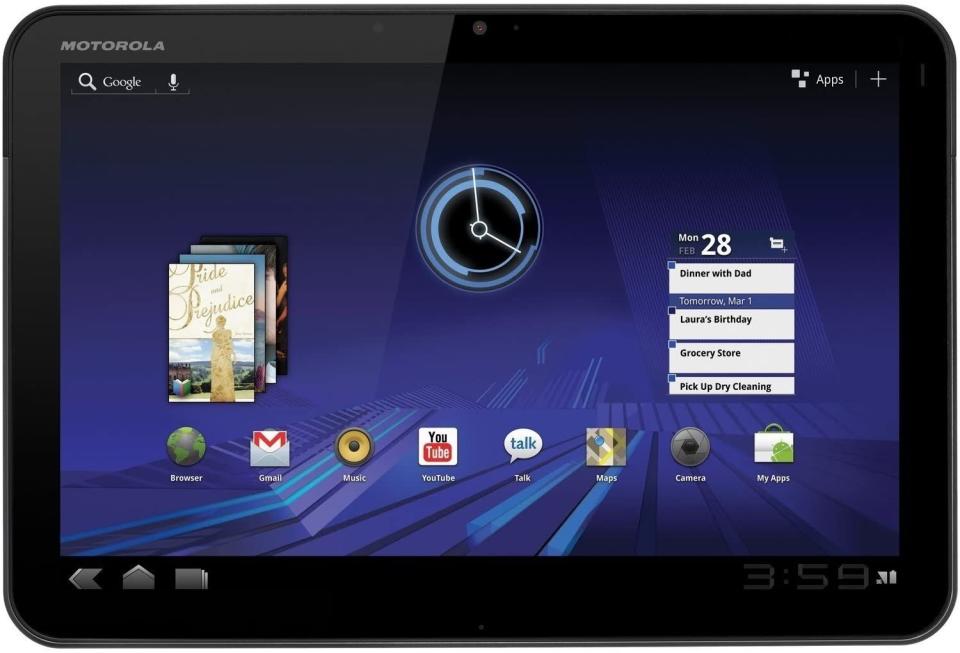
When the Xoom went on sale in February 2011, certain models shipped with an EV-DO Rev. A radio for wireless data plans offered by carriers like Verizon. Motorola made it clear, though, that if you bought one of those cellular models, you'd eventually be able to send it in and have that slower component swapped out for a brand-new LTE radio. No one feeling out the tablet space had tried anything nearly as gutsy, though the upgrade process wasn't quite as smooth as Motorola had promised. If the Xoom was known for one thing, it was the fact that it was the first tablet to use Android 3.0 Honeycomb -- the first and only tablet-exclusive Android update.
As we saw with the Galaxy Tab, tablets running Android 2.0 and up basically just acted like jumbo smartphones. Honeycomb was a sign of Google’s recognition that tablets demanded their own tools, features and interfaces. Because of that, Xoom owners got the first taste of Android’s Tron-like redesign, its support for dual-core processors, its easy multitasking -- the list goes on. It was hardly a perfect update, but Honeycomb gave the Android tablet experience a sense of cohesion that it never really had before. Unfortunately, none of this turned the Xoom into an iPad-style success: Motorola sold a few hundred thousand units in the months after launch, and at the end of 2011, it was replaced by another, incredibly poorly named Motorola tablet called the Xyboard. That follow-up failed to catch on, too, and Motorola bowed out of the tablet race soon after.
Fun fact: The man who spearheaded that Android redesign, Matias Duarte, laid much of the visual groundwork for Palm's webOS. That means he's also tangentially connected to another disappointing tablet: HP's TouchPad.
Shafted by software
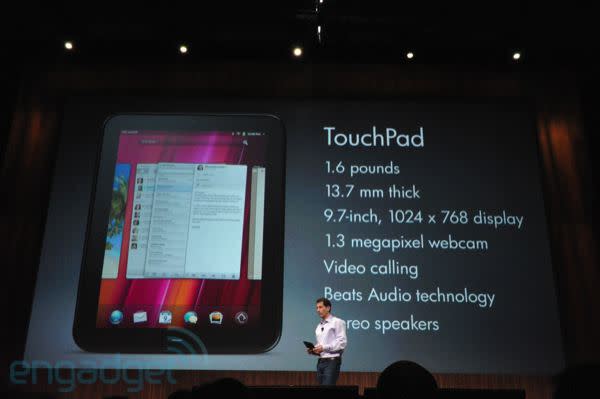
People mainly remember the TouchPad for two things: It was the first tablet powered by webOS, and that its all-too-brief life ended in an insane fire sale. When it launched on July 1, 2011, the base model TouchPad with 16GB of storage cost $500 -- a reasonable price for a tablet with a 10.1-inch screen. Less than two months later, HP (which acquired Palm in 2009 in large part because of webOS), discontinued all of its webOS hardware in one swift strike. Before long, you could walk into a big-box store and waltz out with a brand new, big-name tablet for $100.
In that moment, HP robbed TouchPad of any future it might have had, but I have to wonder how much of a future it had anyway. (Nearly a decade later, that's still hard for this old Palm nut to admit.) The hardware was decent enough for the time, with a 1.2GHz Snapdragon processor, 1GB and surprisingly solid screen, but none of that was enough to fix the platform's most dire issues. Chief among those problems: WebOS was a delight to use, but its foundation made it nearly impossible to develop ambitious, high-quality software. Remember, it was called webOS at least in part because its apps were built using HTML, CSS and Javascript. That was great if a developer wanted to cobble together a Twitter client, but nearly worthless for creating the kinds of experience that could coax people into embracing a new platform.
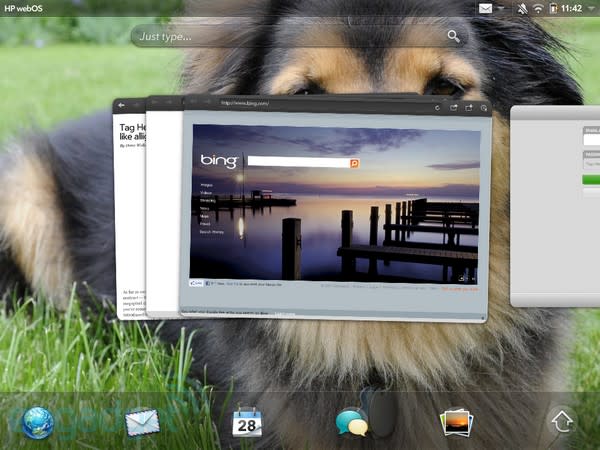
After all that, HP continued to make Android-powered tablets -- including one that used an Intel Atom processor, another evolutionary dead-end for mobile devices -- to little fanfare. And webOS? The TouchPad's greatest asset and the albatross around its neck? Well, if you have an LG smart TV, you're probably using it right now.
HP wasn’t the only tablet maker to ultimately get screwed by its software. For some reason, BlackBerry -- a company that struggled to make compelling all-touch smartphones -- decided to build a slate of its own. When the PlayBook launched in April 2011, the hardware didn’t give us much to complain about -- it packed a TI OMAP4430 chipset with 1GB of RAM, a 5,300mAh battery and a pair of capable cameras into a sleek, understated body. Sure, the bezels around its 7-inch screen were wide enough to make it look more like a digital photo frame than a productivity machine, but that's mostly just how things were back then.
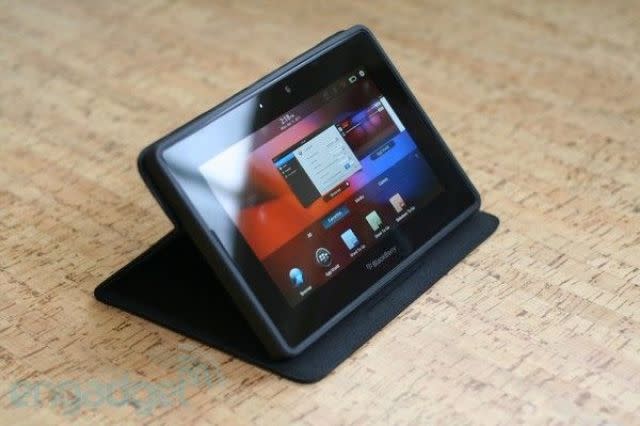
No, the real knock against the PlayBook was that BlackBerry’s tablet OS was based on QNX. It looked lovely (and very webOS-y) thanks to some design help from The Astonishing Tribe, but it also meant the company had to try and build a viable app ecosystem from scratch. Spoiler alert: It didn't work. There was something like 3,000 apps available at launch, a decent number of which were half-baked Flash app conversions, and the company couldn't give enough people a reason to develop apps for the PlayBook. It didn't help that the PlayBook lacked some obvious apps from the get-go. The tablet didn’t even ship with email or contacts apps, for instance, a frankly ridiculous omission for a company that pegged itself as a friend to business customers.
BlackBerry Tablet OS 2 launched six months later and brought with it the ability to run Android apps, but by then, it was too late. The PlayBook’s chances of outselling the iPad, or literally any other tablet for that matter, were nil.
Google and Microsoft enter the fray
While HP and BlackBerry were floundering, Google was quietly working with partners to create tablets of its own. In many ways, these Nexus tablets were the clearest spiritual l counterparts to the iPad: Because they ran clean software and benefited from Google's input on hardware, they were effectively the standard-bearers for the Android tablet experience.
Over the years, different companies produced the hardware -- it was ASUS in the beginning, later followed by Samsung and HTC. And, with a handful of exceptions, they were mostly solid machines. The Nexus 7s, in particular, were two of the best Android tablets you could buy in 2012 and 2013, and their roughly $200 price tags made them accessible to almost everyone. They remain perhaps the most beloved of all Nexus tablets, mostly because the models that came after weren't particularly great deals.
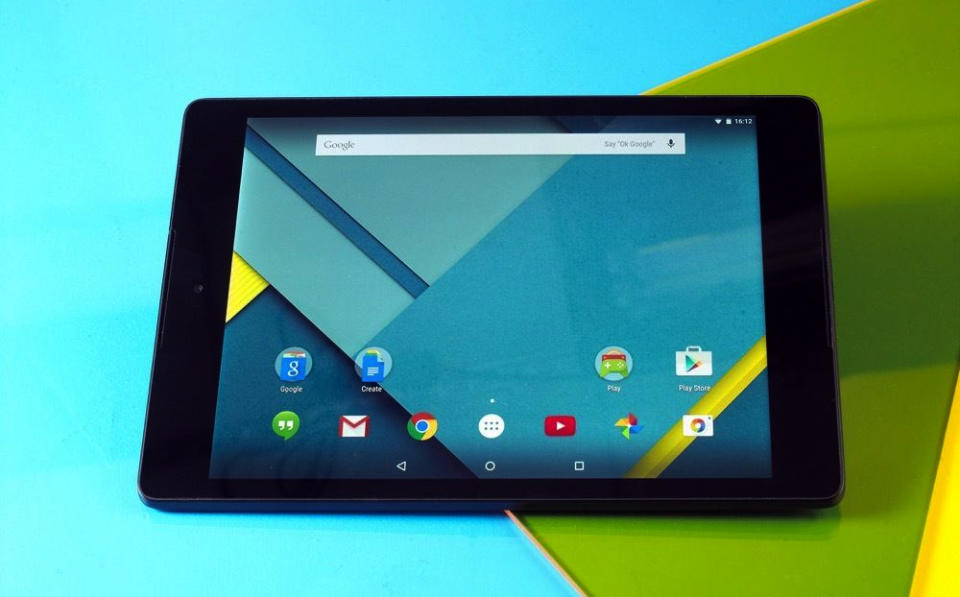
The $500, Samsung-built Nexus 10 had a screen that ran at resolutions rivaling laptops, but it wasn’t as fast as some rivals at certain tasks and suffered from mediocre battery life. HTC's Nexus 9 didn't fare much better; it was the first tablet to get a Material Design makeover with Android Lollipop, but its hardware felt chintzy and its screen wasn’t particularly impressive, especially compared to the one that came before it.
Google's Nexus tablets started off strong, but over time the company lost affection for the project. The Nexus 9 was the last of the bunch, and it was replaced the following year by a tablet Google designed and built from scratch: the Pixel C. It was the company's first attempt at replicating the PC convertible concept with an Android device, and while the device itself wasn't a runaway hit, it opened the door for more Pixel-branded tablets.
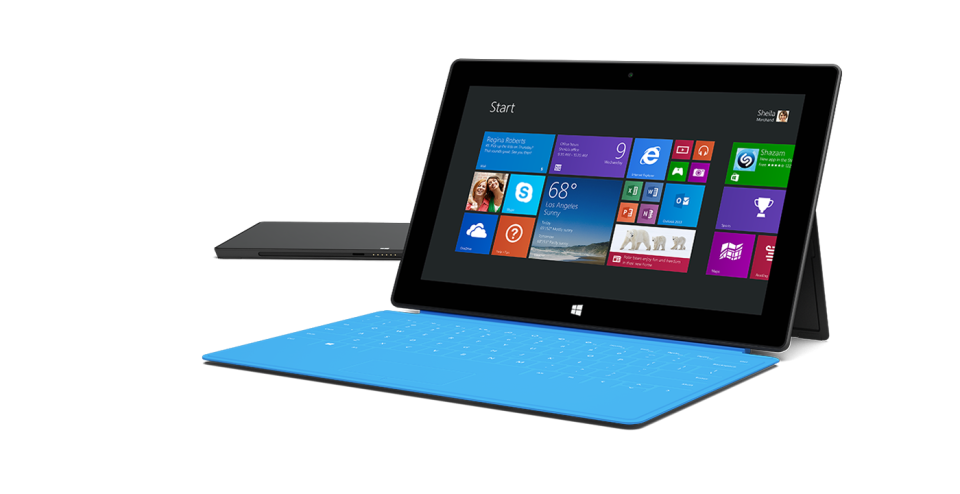
Speaking of PC-like convertibles, Microsoft’s original Surface tablet deserves an honorable mention, too — it was, and still is a beautiful machine, but like the BlackBerry PlayBook, its operating system was its greatest flaw. Sure, everything looked like Windows 8, with big icons and loads of Live Tiles blinking at you, but it ran a stripped-down version of the software called Windows RT engineered for the Surface’s Nvidia Tegra 3 chipset. Because of that, you couldn’t run full-blown Windows software; people had to wait months for the original Surface Pro if they wanted to use their Microsoft machines like actual computers.
Some people missed that memo, so they bought Surface RTs that wouldn’t actually do what they needed. And many who understood what they were buying still got burned by a shortage of quality compatible apps. Things eventually got so bad that Microsoft ate nearly $1 billion in the form of an inventory write-down because no one was buying these things.
I mention this not to rub salt into an old wound, but because it’s a textbook example of an idea well ahead of its time — or, I guess, of history repeating itself, if you’re a cynic. Microsoft is trying something similar again right now with the Surface Pro X, but we’ll have to wait and see if it can really deliver where the Surface RT failed.
Looking back, the annals of tablet history are littered with flops, and that makes Apple’s success feel even more meaningful, but let’s not forget one important thing. The iPad was made better because its competitors continually raised the stakes -- Samsung and HTC’s tablets embraced sophisticated styluses before the iPad Pro ever did, and I have to wonder if iPadOS would have become what it did if Microsoft didn’t keep plugging away at the Surface lineup. Whether or not you like Apple’s tablets, I think we can all agree on one thing: iPads owe a huge debt to the devices that tried (and failed) to take them down.



